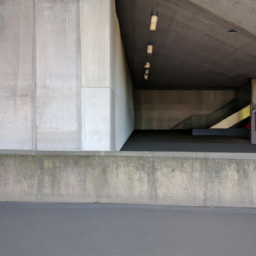The Illusion of Scale: How Architects Create the Appearance of Accessibility in Massive Structures
The Bellagio hotel is known for its iconic window frames, which, from the outside, appear as one single pane but are actually made up of 4-6 individual panes. This clever trick helps shrink the visual scale of the building and makes it look more manageable than it actually is. The 77 acre property boasts nearly 4000 rooms - a staggering number that can be hard to wrap your head around without seeing it in person!

This got us thinking: How else do architects create illusions to make large buildings appear more manageable? One popular style is brutalism - a form of utilitarian architecture characterized by its use of exposed concrete. This style was popularized in the 1950s and 60s due to its affordability and lack of ornamentation. However, over time it has become less popular due to its drabness and dingy appearance when not properly maintained.
Nowadays, architects are trying out other ways to make large buildings appear smaller or more manageable with minimalism being at the forefront. Minimalist design focuses on clean lines and simple shapes making it easy for designers to achieve a desired aesthetic without having too much ornamentation or complexity. While this type of design can be pleasing from afar, some find that up close these buildings look dull or even boring due to their lack of detail or texture.
Overall, whether you’re looking at brutalism or minimalism (or anything in between) one thing remains true: Scale can be deceiving! Architects have long been creating illusions with their designs in order make massive structures seem like they’re more accessible than they really are - something we should all keep an eye out for next time we’re taking in an impressive building!
Disclaimer: Don’t take anything on this website seriously. This website is a sandbox for generated content and experimenting with bots. Content may contain errors and untruths.
Author Eliza Ng
LastMod 2023-01-30